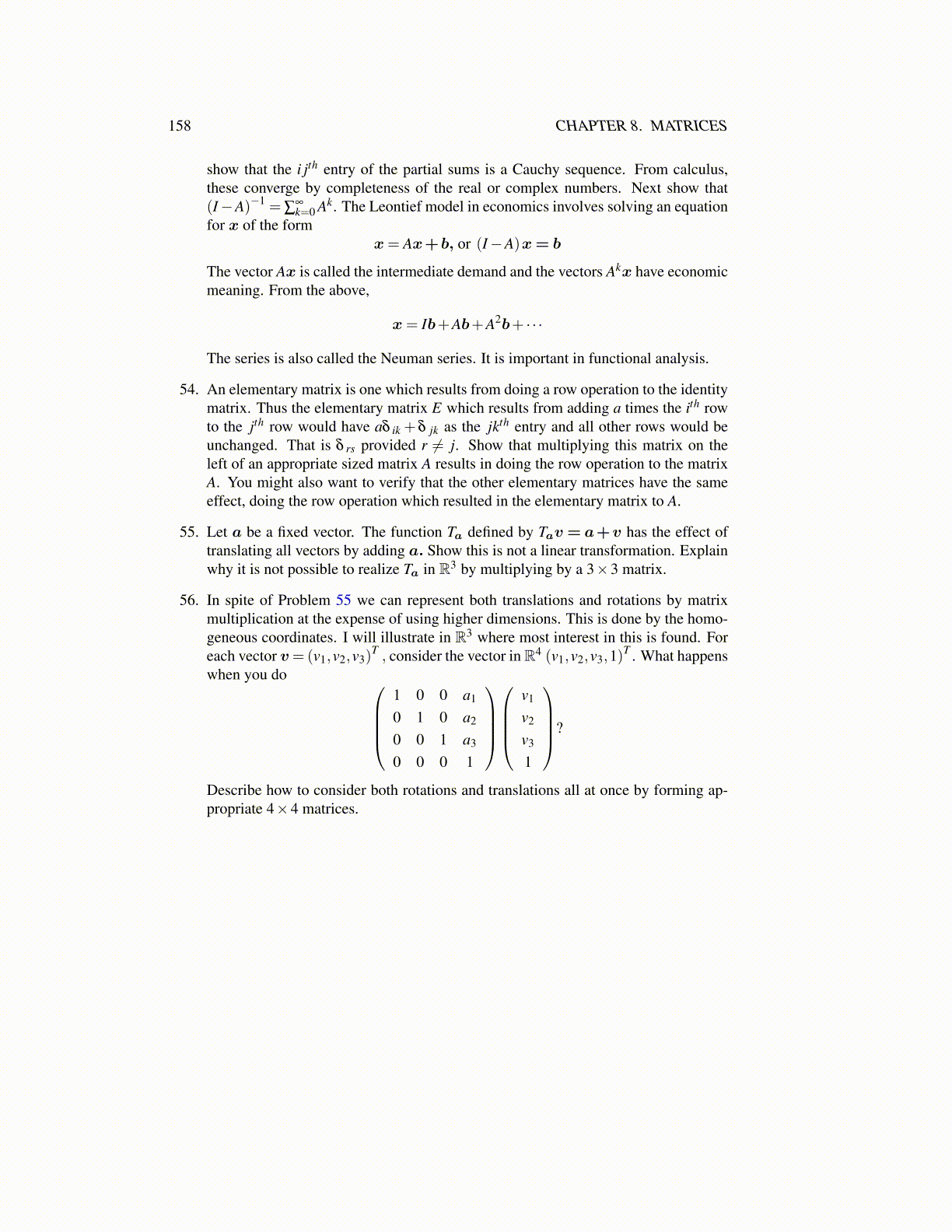
158 CHAPTER 8. MATRICES
show that the i jth entry of the partial sums is a Cauchy sequence. From calculus,these converge by completeness of the real or complex numbers. Next show that(I−A)−1 = ∑
∞k=0 Ak. The Leontief model in economics involves solving an equation
for x of the formx= Ax+b, or (I−A)x= b
The vector Ax is called the intermediate demand and the vectors Akx have economicmeaning. From the above,
x= Ib+Ab+A2b+ · · ·
The series is also called the Neuman series. It is important in functional analysis.
54. An elementary matrix is one which results from doing a row operation to the identitymatrix. Thus the elementary matrix E which results from adding a times the ith rowto the jth row would have aδ ik + δ jk as the jkth entry and all other rows would beunchanged. That is δ rs provided r ̸= j. Show that multiplying this matrix on theleft of an appropriate sized matrix A results in doing the row operation to the matrixA. You might also want to verify that the other elementary matrices have the sameeffect, doing the row operation which resulted in the elementary matrix to A.
55. Let a be a fixed vector. The function Ta defined by Tav = a+v has the effect oftranslating all vectors by adding a. Show this is not a linear transformation. Explainwhy it is not possible to realize Ta in R3 by multiplying by a 3×3 matrix.
56. In spite of Problem 55 we can represent both translations and rotations by matrixmultiplication at the expense of using higher dimensions. This is done by the homo-geneous coordinates. I will illustrate in R3 where most interest in this is found. Foreach vector v= (v1,v2,v3)
T , consider the vector in R4 (v1,v2,v3,1)T . What happens
when you do 1 0 0 a1
0 1 0 a2
0 0 1 a3
0 0 0 1
v1
v2
v3
1
?
Describe how to consider both rotations and translations all at once by forming ap-propriate 4×4 matrices.